Chair's Message
 Interest in the Board’s work and requests for assistance from the Board are continuing to grow–work on topics such as visual quality management and forest stewardship plans, and assistance dealing with concerns and complaints. To ensure we continue to make valuable contributions to forest and range management, the Board strives to remain knowledgeable on current forest management processes and issues, endeavors to maintain and enhance expertise, and is focused on the continuous improvement of forest and range practices in BC.
Interest in the Board’s work and requests for assistance from the Board are continuing to grow–work on topics such as visual quality management and forest stewardship plans, and assistance dealing with concerns and complaints. To ensure we continue to make valuable contributions to forest and range management, the Board strives to remain knowledgeable on current forest management processes and issues, endeavors to maintain and enhance expertise, and is focused on the continuous improvement of forest and range practices in BC.
Over the past 6 months, the Board has engaged with First Nations, the forest industry, stakeholders, professionals, and various levels of government to share our key report findings and recommendations, and to be accountable for the Board’s work and the time it takes to get it done. We use the feedback we receive in these sessions to improve our processes and for reference as the Board identifies forest and range issues for future investigation.
Through its reports, the Board highlights for the public, and reports out to government, areas of improvement to forest practice legislation, regulation and policy. However, since the beginning of April, the Board has been unable to publish any reports because there has not been a Minister to provide them to. We have a number of significant reports that are ready for release, including our work on road construction on steep slopes and our evaluation of government’s Forest and Range Evaluation Program (FREP). Look for those reports to come out later this year.
A special investigation report we published in May 2015 remains very pertinent today, given this year’s severe forest fire hazard conditions – Fuel Management in the Wildland Urban Interface – Update. The report identifies opportunities for improvement, but also is meant to be a reminder for all of us that work, recreate or live in forested areas, whether on private or public land, to be FireSmart and do our part in reducing the risk of damaging fires.
I would like to thank all the individuals and groups the Board met with while it was in Cranbrook and the East Kootenays in June. Like other field days we have had across the province, it was an excellent opportunity for the Board to see and discuss first-hand the issues and challenges that First Nations, stakeholders, industry and government have on a very crowded and diverse forest land base. You showed us that many interests can constructively come together to cooperate, collaborate and communicate to advance stewardship on the landscape. Thank you again.
2017 BC Wildfire Season
 Given the current wildfire situation in BC, the Board would like to draw attention to our 2015 report, Fuel Management in the Wildland Urban Interface – Update.
Given the current wildfire situation in BC, the Board would like to draw attention to our 2015 report, Fuel Management in the Wildland Urban Interface – Update.
The report identified the progress made since 2010 to protect communities from forest fires in the wildland-urban interface. As a result the following suggestions were made:
- Provide sustainable and adequate funding for fuel treatment.
- Treat more area effectively and at a lower cost.
- Redefine the role of local government to use their strengths.
- Reduce the hazard in all new housing developments in interface areas.
- Convince or compel at-risk private landowners to reduce forest fuel hazards on their properties.
These are proactive steps BC needs to take as climate change continues, increasing the frequency and severity of wildfires. By taking preventative steps we will be able to decrease risks to people and their homes and lower the cost of fighting fires.
Tips for Homeowners
Want to reduce the risk to your home in the event of a wildfire? Then follow these tips:
- Remove all combustible debris (e.g., leaves and pine needles) from your roof and gutters.
- Clear all dead plants away from your home.
- Keep grass mowed and remove weeds within 10 metres of your home.
- Move all combustible items into your home or garage (e.g. patio furniture, firewood and toys).
- Move propane tanks 10 metres away from your home.
- Try to create a non-combustible zone around your house by maintaining a 1.5-metre area of mineral soul, rock or concrete.
- Remove weeds and other debris from areas surrounding large stationary propane tanks.
- Make sure spruce, fir, pine and cedar trees are at least 10 metres from your home.
- Avoid having plants that have aromatic leaves or needles, accumulations of fine, dry and dead material, resin or oils and loose, papery or flaky bark around your home.
- Remove branches on trees within 2 metres of the ground.
- Avoid having mulch within 10 metres of your home.
Links to More Information
Board Visit to Cranbrook
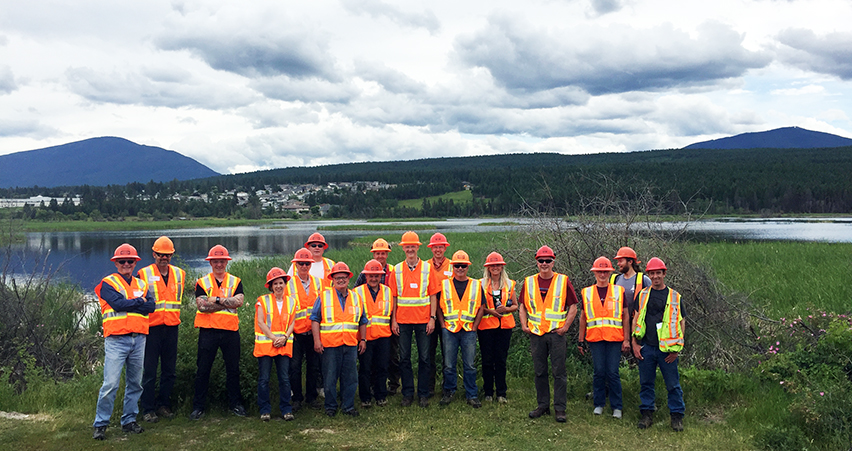
From June 18-21, the Board members and senior staff attended a Board meeting and field trip in Cranbrook, BC. Each year the Board meets in a community somewhere outside of the lower mainland to see and hear about local forest and range issues. This trip was the first time the full Board has visited the East Kootenay in over 15 years. For some Board members and staff, it was their first visit to this part of the province. We thank the Ktunaxa First Nation for welcoming us to their lands and for taking the time to meet with us to talk about their concerns with forest and range stewardship.
During the three days, we spent time out in the field with Canfor, Wildsight, the East Kootenay Restoration Society, the Ministry of Forests, Lands and Natural Resource Operations and with volunteers from the Cranbrook Community Forest. We had the opportunity to view and discuss interface fuel reduction, visual management, wildlife habitat management and ecosystem restoration. We walked through overgrown dense forest that poses fire risk to the community, and restored forests that have been treated to reduce forest fuels and protect neighboring houses, and to restore the native bunchgrass ecosystem. We also met with representatives of the Ktunaxa First Nation, BC Timber Sales, several area woodlots and the Ministry of Forests, Lands and Natural Resource Operations. We heard a good cross-section of views and opinions and were impressed by the willingness of everyone to talk, to meet and to work through the complex issues affecting the stewardship of forest and range land in the East Kootenay.
Audit Season Update
The 2017 audit season is well underway, with the first four audits in progress. Two audits of the BC Timber Sales program on southern Vancouver Island and in the Skeena Stikine region near Smithers have completed field work already. An audit of Winton Global Industries near Fort St. James has also completed field work. The fourth audit, of a forest licence in the Cascades district near Lillooet, has been postponed due to the current forest fire situation in the interior of BC. Another audit near Quesnel is also on hold. We will reassess the situation later in the summer and decide when these audits can proceed. In total, we plan to do 10 audits this year.
The Board is very interested in seeing new forest stewardship plans (FSPs) that have been prepared and approved since our special investigation of FSPs was published in 2015. At the time we identified a number of improvements that are necessary to make FSPs more useful. Many FSPs are due for renewal and we are waiting to see how well they address our 2015 recommendations.
This audit season, we will be reviewing any newly approved FSPs that we see in our audits of forest licensees. We will not comment on the measurability and verifiability of the FSP content within the audit report, but at the end of the audit season, we plan to publish a special report that summarizes what we found in the new FSPs. This may depend on having enough new FSPs to make any comments meaningful. The report will not identify the individual FSPs, but will identify any general areas of improvement and will highlight any examples of good results and strategies we see in those plans. The intent of the report will be to provide advice to those licensees currently in the process of preparing new FSPs.
Staff will also be assessing the merits of including FSP content as part of the planning component of all audits starting in 2018. Our current approach is to only comment on the FSP content if it relates to an issue we find on the ground. This new approach would go further in assessing the FSP content for compliance with FRPA, particularly the requirement to include measurable and verifiable results and strategies. The Board plans to review the staff assessment and make a decision on whether to comment on the measurability and verifiability of FSP content in December 2017.
Improving the Implementation of FRPA in BC
Forest Appeals Commission Decision on M.G. Logging
Forest Appeals Commission Decision on M.G. Logging
In April 2016, the Board appealed a determination in which a timber sale licence holder in the Prince George area was levied a penalty of $3500 after contravening requirements in the timber sale licence to leave Douglas-fir trees standing for wildlife and other purposes. The licence holder had cut 522 Douglas-fir trees in total,
135 of which were cut after government staff had reminded and warned the licensee that the Douglas-fir trees were to be left standing. The Board was concerned that the penalty was too low to act as a deterrent, and did not adequately compensate the public for its loss of wildlife trees. The Board also raised questions about the ability of a district manager to consider previous contraventions by related companies with the same sole director.
In February 2017, the Forest Appeals Commission (FAC) handed down its decision in the case (for more info – http://www.fac.gov.bc.ca/forestAndRange/2016frp001a.pdf). The FAC increased the penalty from $3,500 to $27,128. Of that total, $6,000 represents the deterrence aspect of the penalty, and the remainder is compensation for the loss of the Douglas-fir trees taken that were supposed to be reserved as wildlife trees.
The FAC took an interesting new approach to determining the penalty for wildlife trees: they considered the “shadow value” to be the amount of stumpage that the Province was willing to forego by requiring the trees to be reserved from harvest ($10,500). But after considering the Board’s evidence and other factors, they doubled that amount to reflect the long term impacts of the loss of the trees. ($21,000).
The decision addresses many other issues too, for which it is very helpful to have a FAC ruling on. For example, they agreed that compliance notices may be considered as previous contraventions, even if they were issued to another legal entity (i.e. another company owned by the same person). There should be some notice provided that a district manager intends to consider those past non-compliances, and the person must be given an opportunity to reply.
The FAC’s decision should also lead C&E Branch and district managers to probe a bit more deeply, in the future, into a couple of aspects – a fuller compliance record being presented at an opportunity to be heard, and more probing as to how much the logs were sold for.
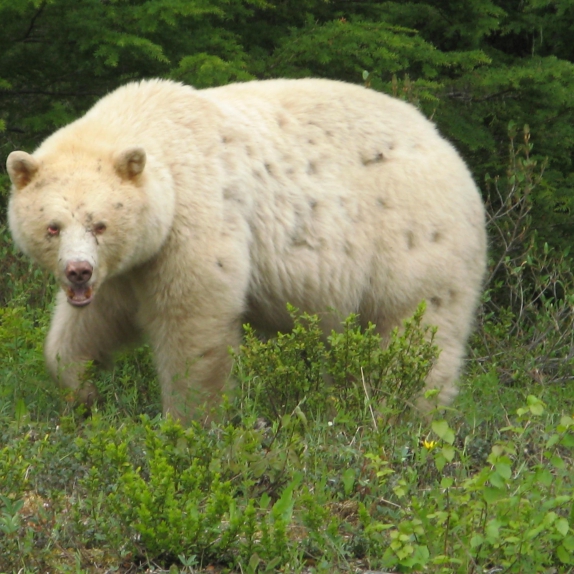
Great Bear Rainforest Land Use Order
The Ministry of Forests, Lands and Natural Resource Operations released a final Background and Intent document to support implementation of the January 2016 Great Bear Rainforest Land Use Order. The Board provided comments on the draft order, based on the findings from our investigation of logging on Sonora Island and the protection of old forest and rare and endangered plant communities. Several of the Board’s questions and concerns appear to have been addressed in the background and intent document, particularly with respect to the definition of old growth, red- and blue-listed plant communities and logging in high value grizzly bear habitat. We expect this document and the updated land use order will provide greater clarity to licensees and forest professionals on government’s objectives for stewardship of important forest values on the central coast of BC.
West Cracroft Island
In 2016, the Board published the “West Cracroft Island Visual Quality” complaint report, involving visual quality impacts at Boat Bay on West Cracroft Island in the North-Central Coast District. The complainant was the owner of a tourism business who depended on the scenic quality of Boat Bay for his guided kayaking business. He was concerned about the impacts of timber harvesting on his business. Following the Board’s investigation, and in response to a request from the complainant, the district manager created a legal order specifically for Boat Bay and changed the visual quality objective from partial retention to retention from viewpoints within the bay.
BCTS Forest Stewardship Plan Appeal
The Board has the ability to join appeals of determinations as a “third party,” and will do so if the issues in the appeal are ones that the board considers important to its mandate, and if it can add value to the proceeding by presenting a public interest perspective that might not otherwise be heard.
In March 2017, the board was notified of an appeal of a district manager’s refusal to approve a forest stewardship plan (FSP) submitted by BC Timber Sales (BCTS) for its Kootenay Business Area. The appeal raised issues concerning whether the results and strategies proposed in the FSP would meet government’s objectives for riparian management and stand level biodiversity. After reviewing the FSP and the issues in the appeal, the Board decided to join the appeal.
The FAC is the body that hears these appeals. The FAC encourages parties to resolve disputes if possible. The Board joined the discussions between BCTS and the district manager and raised several of its own concerns with the FSP in addition to those raised in the initial grounds for appeal. These related to visual quality objectives, old growth, riparian areas, fish and wildlife. Some of the issues concerned the measurability and verifiability of proposed results or strategies, and the circumstances under which BCTS would be exempt from meeting government objectives. Several of these issues were similar to those identified in the board’s 2015 report “Forest Stewardship Plans: Are They Meeting Expectations?”
In the end, BCTS agreed to make some changes to the FSP and the parties were able to reach a resolution of the issues, avoiding the need for a formal appeal hearing before the FAC.
Conferences and Events
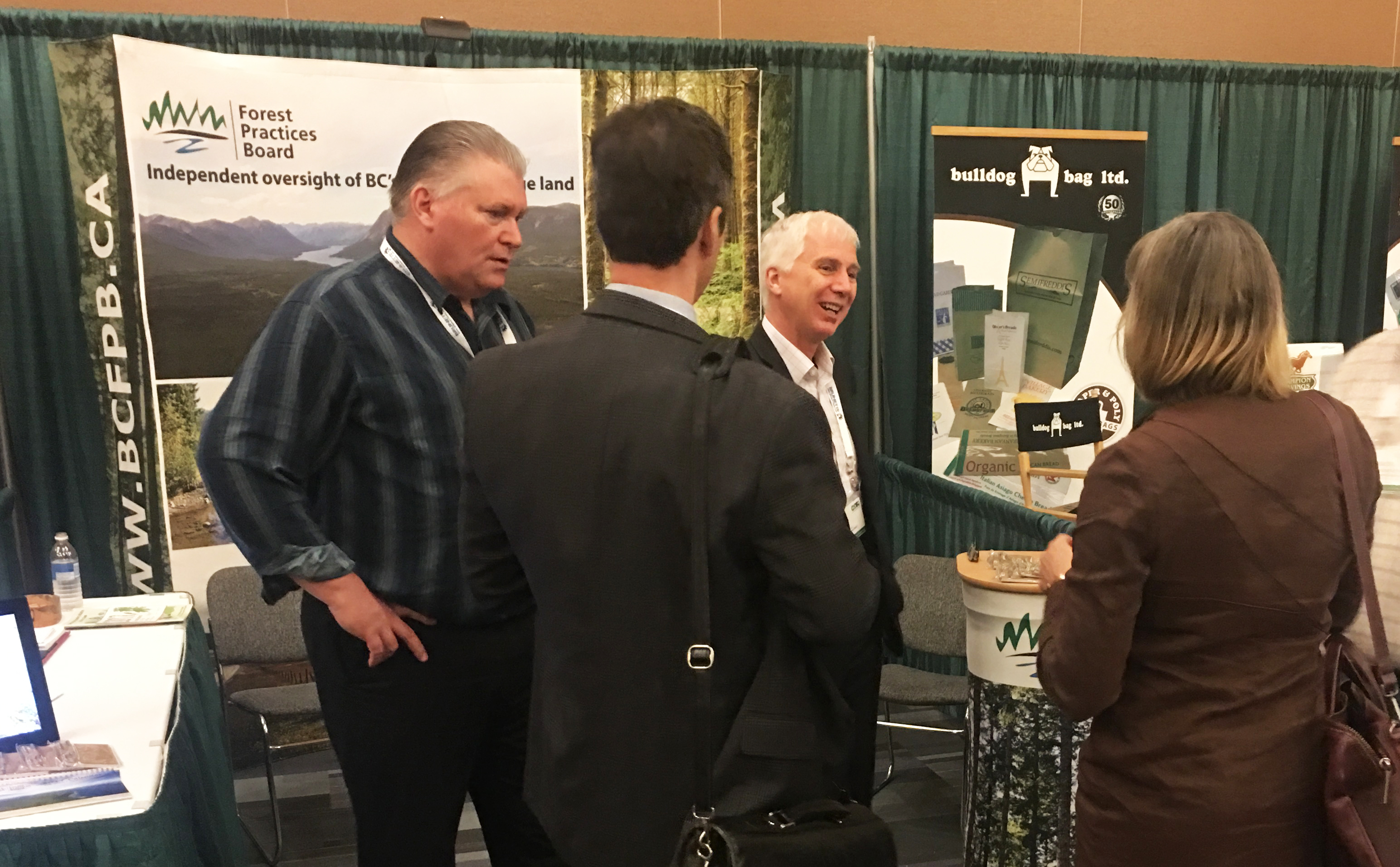
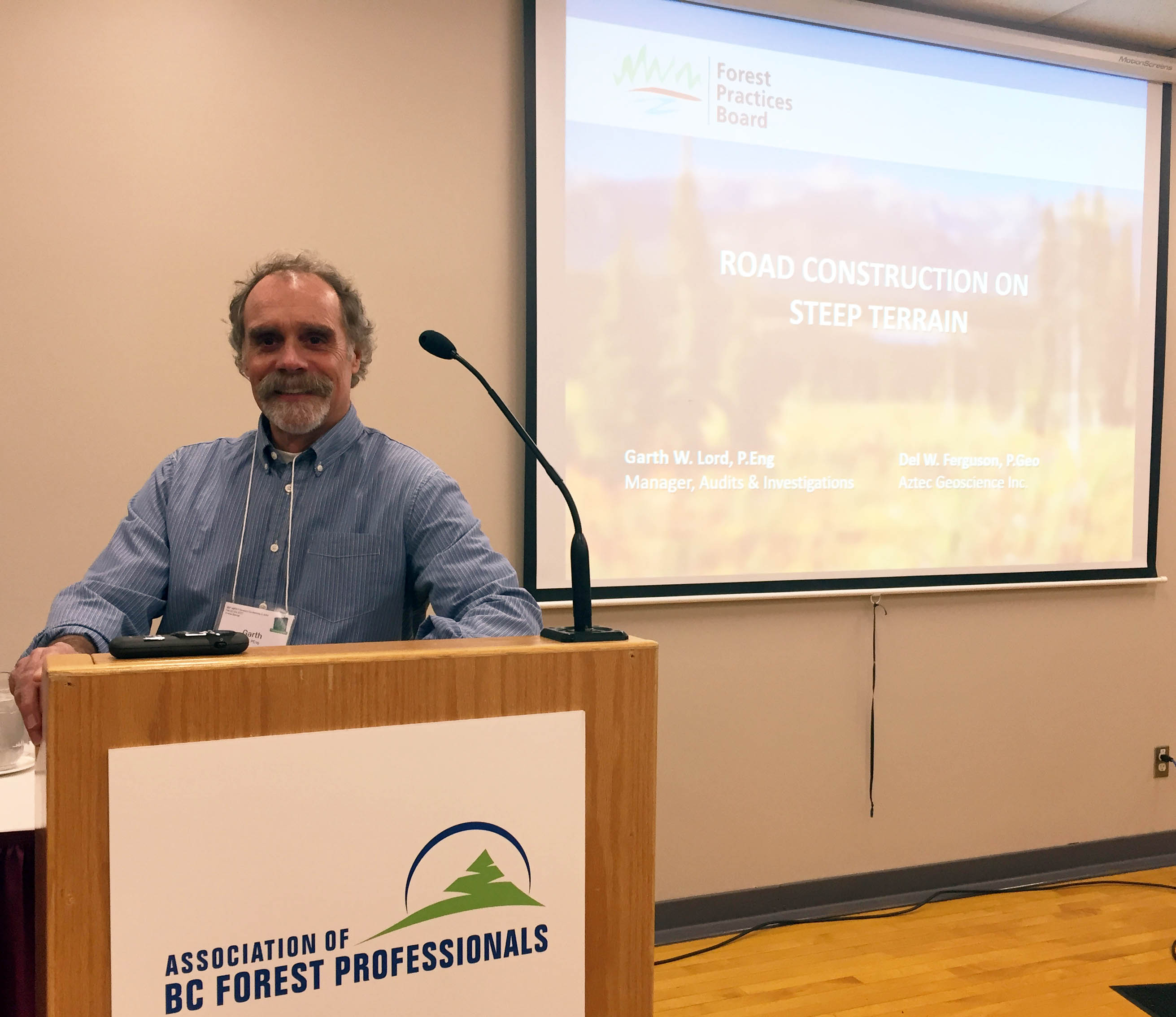
January to June is conference and annual general meeting season in the forest sector and the Board tries to get to as many events as possible to meet with people and inform them about who we are and our work. This year we participated in 19 of these events, and made presentations at 8 of those. In addition, we attended
7 meetings with stakeholders to discuss our work. We also gave presentations on the Board to students at three post-secondary institutions.
The Board Chair and staff spoke about ongoing work and recent reports published by the Board at the Coastal Silviculture Committee annual conference, the Guide Outfitters Association AGM, the Association of Professional Engineers and Geoscientists of BC AGM, the Association of BC Forest Professionals AGM, the Western Silviculture Contractors Association AGM and several more events. We also met with government staff in regions and districts and with industry professionals and staff in several areas of BC.
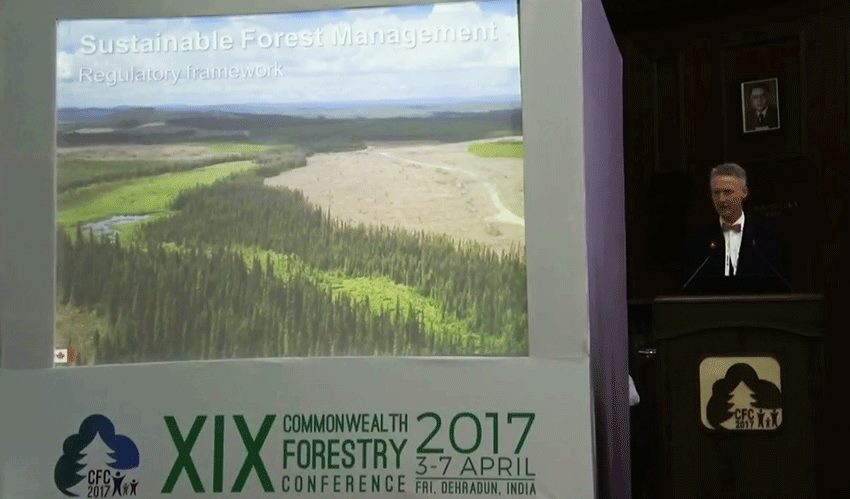 The highlight for this year was speaking at the Commonwealth Forestry Conference in Dehradun, India, organized by India’s Forest Research Institute and the Indian Council of Forestry Research and Education, with support from the Indian Government and the Commonwealth Forestry Association. Board Chair, Tim Ryan, was invited to speak about our independent oversight model in British Columbia under the conference theme, Good Governance in Forestry. He talked about the circumstances that led to the creation of the Board and how we carry out our mandate. Representatives of the forest sector from 39 Commonwealth countries were in attendance at the session. The Board would like to acknowledge the assistance of Forestry Innovation & Investment and the University of British Columbia in attending the conference.
The highlight for this year was speaking at the Commonwealth Forestry Conference in Dehradun, India, organized by India’s Forest Research Institute and the Indian Council of Forestry Research and Education, with support from the Indian Government and the Commonwealth Forestry Association. Board Chair, Tim Ryan, was invited to speak about our independent oversight model in British Columbia under the conference theme, Good Governance in Forestry. He talked about the circumstances that led to the creation of the Board and how we carry out our mandate. Representatives of the forest sector from 39 Commonwealth countries were in attendance at the session. The Board would like to acknowledge the assistance of Forestry Innovation & Investment and the University of British Columbia in attending the conference.
Northwest Visit
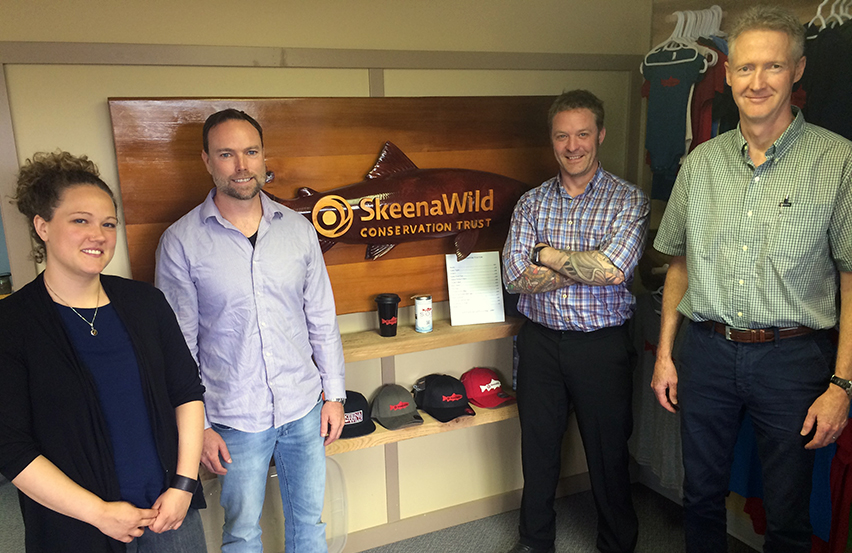
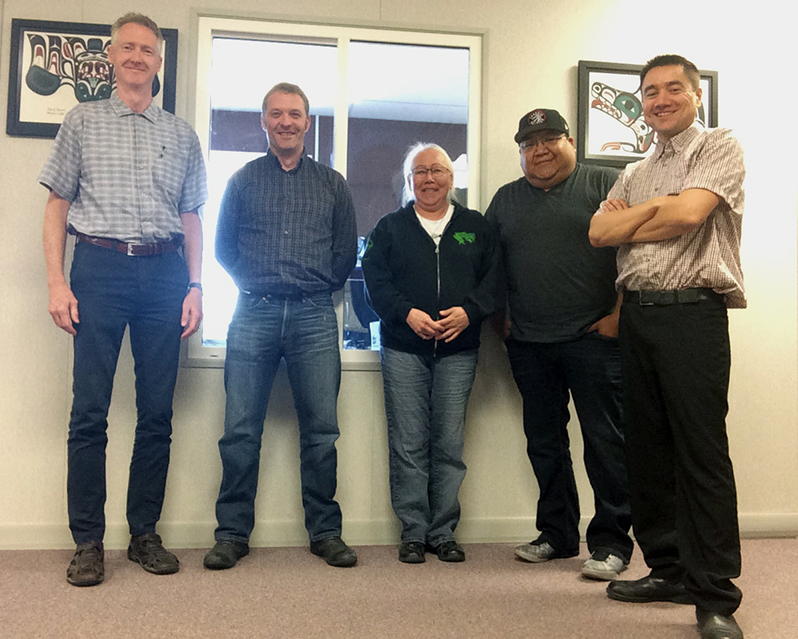
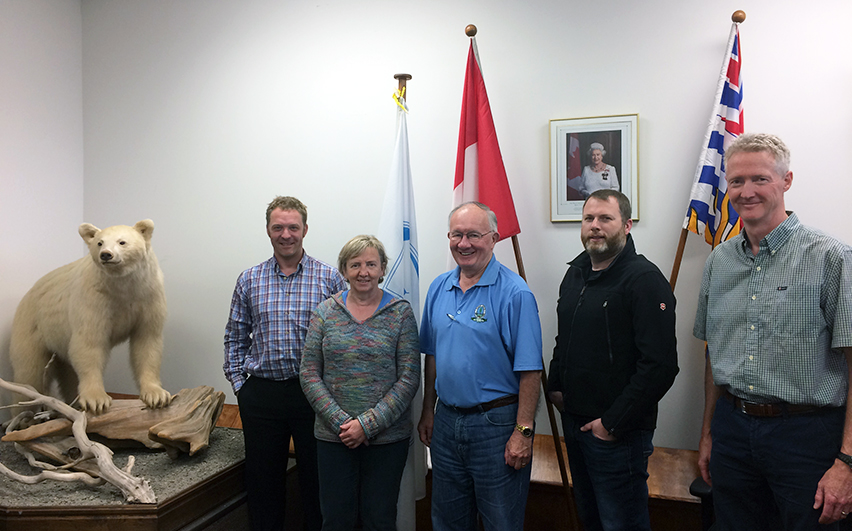
This past July, Board Chair, Tim Ryan and Director of Investigations, Sam Coggins, travelled to Terrace, Prince Rupert and Kitimat to talk about the Board and its work, discuss the northwest communities’ forestry issues and concerns. During the visit, they had the opportunity to meet with representatives from the City of Terrace, the City of Prince Rupert, the Planning and Implementation Committee, the Terrace FLNRO office and Ellis Ross, Skeena Sawmills, Skeena Wild, the Kitselas, Kitsumkalum, Tahltan, Haisla, Gitga’at, and Metlakatla First Nations, and the North Coast Skeena First Nations Stewardship Society.
It was very apparent that the people care about their forests and what’s happening in them. We heard about a number of issues, including harvesting of young stands of trees, forest stewardship plans, consultation with First Nations, access management on forestry roads, and more.
People
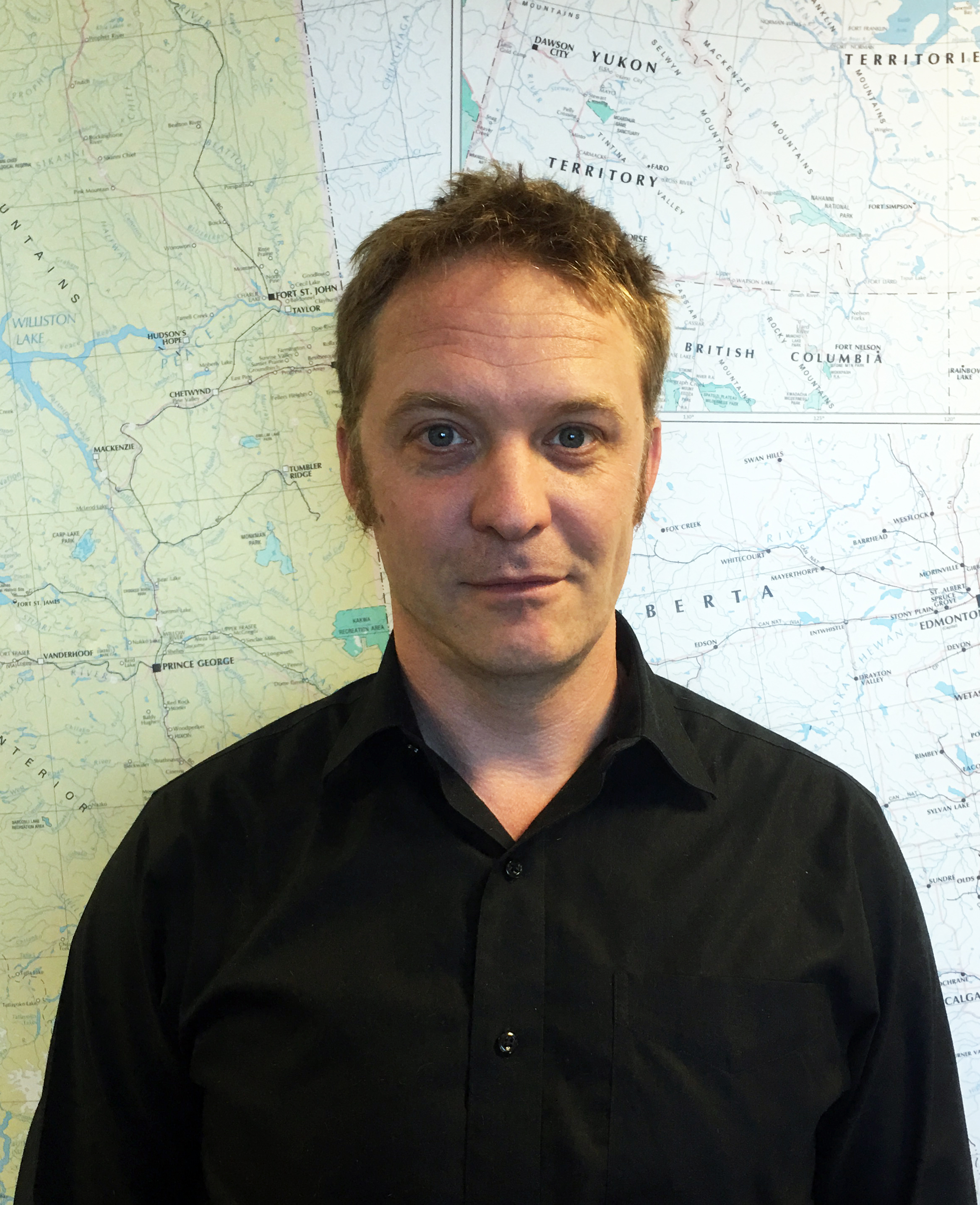 New Staff
New Staff
 New Staff
New Staff
In March 2017, Sam Coggins joined the Board as the new Director of Investigations, replacing Ken Zielke who retired from government in January. Sam came to the Board from the Kitselas First Nation, where he was the Director of Lands and Resources. With a PhD in forestry and experience working as a forester for the Nisga’a First Nation and as a project manager for Stantec/Cambria Gordon, Sam brings a broad range of resource development and land management experience to the Board. Sam is responsible for directing the complaint investigation program and the special projects program. He can be reached at Sam.Coggins@bcfpb.ca or 250-213-4713.



